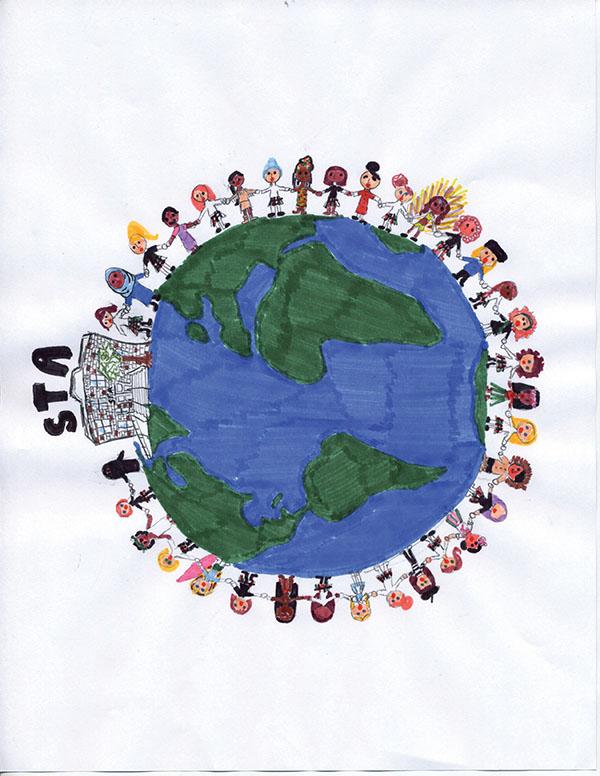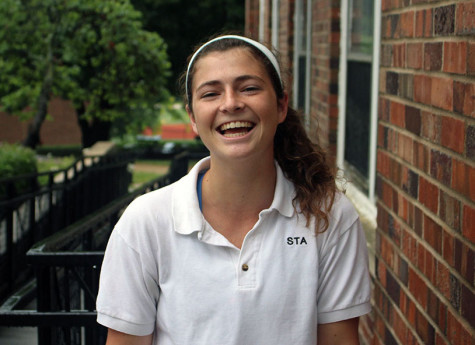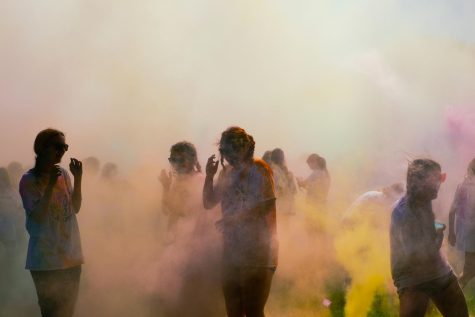Discussing Diversity Face to Face
The Dart explores administrative efforts to increase diversity at STA.
March 6, 2015
According to the STA mission statement and philosophy, the school community “values, and therefore embraces, a culturally, economically, ethnically, and racially diverse student body. Community members bring divergent backgrounds and experiences that help develop the understanding and appreciation of others that are vital in today’s global community.”
This philosophy has been at the heart of the mission of STA since its founding, but some students believe the school needs more diversity.
“I think [diversity at STA is] pretty lacking… there’s not that many people of diverse backgrounds here,” senior Abigail Ellias said. “[Backgrounds are] fairly consistent, at least at surface level.”
However, according to principal of student affairs Mary Beth Compton, diversity is a “broad term” that expands past ethnic or racial backgrounds.
“It’s certainly that, but also cultural background, socioeconomic status, religion, your upbringing, your learning style,” Compton said. “That’s really what we’ve kind of been trying to communicate at our student event and then our recent faculty and staff inservice.”
According to Compton, there are more white students than minority students at St. Teresa’s.
“But there’s still diversity on our campus,” Compton said. “Can we take steps to learn more and maybe to create more parity in those numbers [of white students and minority students]? Absolutely.”
[nggallery id=1014]
Junior Jewell Allen agreed that STA could improve its diversity.
“I think we do a good job diversifying but I think we could do a lot better especially with our teachers,” Allen said. “I think we should make a huge point to diversify our staff.”
A faculty with various backgrounds is “an important component” to diversity at St. Teresa’s as a whole, according to Compton. It would allow “all students here[to] look at someone and see someone who looks like them.”
Scholarships are another element that could contribute to a more diverse student body as well, according to Allen.
“I think it would be a good idea to offer scholarships specifically for girls who are not as economically stable,” Allen said.
Most current scholarships are around $3,000, according to Compton. But there are efforts to provide scholarships to support two students from a low income Catholic elementary school.
“We don’t want economics to be a barrier for a whole class of girls to come here,” Compton said.
Recruitment of potential students is another way STA could become more diverse, according to senior Grace Sly.
“Most of the places senior ambassadors go are Catholic schools anyway,” Sly said. “It’s all people who are going to end up here.”
According to admissions director Roseann Hudnall, it can be difficult to recruit students from public schools because they do not have time in their school day. School fairs are a way to reach public school students outside of the school day.
“We will go wherever they will allow us to,” Hudnall said. “[Local Catholic high schools] all go to the same schools so anybody that’s willing to have us come, we go to them.”
In an effort to increase diversity and inclusion awareness, the STA Board of Directors approved a new diversity initiative in the Fall of 2014.
“[Diversity] has always been a goal and a huge component of our school mission, but we want to bring it to the forefront and kind of reenergize it,” Compton said.
One element of the initiative is the creation of a new parent committee. Last year the Star Parents Association formed a sub-committee called the Star Galaxy Committee, co-chaired by STA board members and current parents Michelle Wimes and Dr. Marion Spence Pierson. According to Wimes, the name of the committee was coined by Dr. Pierson based on the definition of the word “galaxy” in conjunction with the STA mascot, the star.
“[Dr. Pierson] wanted to build on your mascot, the star,” Wimes said. “She thought that this whole notion of how you define galaxy, ‘a large system of stars held together by gravitational attraction, an assembly of brilliant or notable persons or things,’ was a great definition of people coming together with a lot of intelligence, a lot of brilliance and coming together for the good of St. Teresa’s and I thought it was the perfect title.”
According to Wimes, the goal of the committee is three-fold: to increase education and awareness around the concepts of diversity and inclusion, to develop a common language so people feel comfortable talking about these ideas and lastly, recruiting diverse students and faculty to STA.
During the 2013-2014 school year the Star Galaxy committee conducted a climate and needs survey for all students, faculty and staff, the results of which were recently shared at the student diversity assembly Jan. 26.
In addition to the recent diversity panel for students, the faculty had a diversity training in-service Feb. 9.
“These trainings have been the start of those kinds of sessions for us to learn and lean in to conversations that sometimes if you don’t feel certain, can kind of feel uncomfortable,” Compton said.
According to Wimes, embracing diversity and inclusion and becoming culturally competent are “vital skills” STA students will need to succeed in the 21st century.
“If STA is not teaching students how to navigate situations with people from vastly different cultures, backgrounds and experiences, with varying thoughts, perspectives and opinions, then the school is really doing a disservice,” Wimes said.
To be successful in the 21st century, according to Wimes, the focus of education will be on creativity, collaboration, communication and critical thinking. All four of these skills will “require the ability to operate comfortably in heterogenous environments.”
“The development and nurturing of inclusive behaviors while welcoming people of diverse backgrounds are critical to students’ success,” Wimes said.
According to Ellias, a more diverse student population would be an asset to education.
“I think it would just bring a lot of perspectives that we don’t have,” Ellias said. “Different cultures coming together is something we should be having as people who are about to go out into the real world…the more diversity, the more well rounded you are.”
“Diversity is at the core of our mission, of our vision for the school,” Compton said. “It has been since we were founded by the sisters of St. Joseph.”







